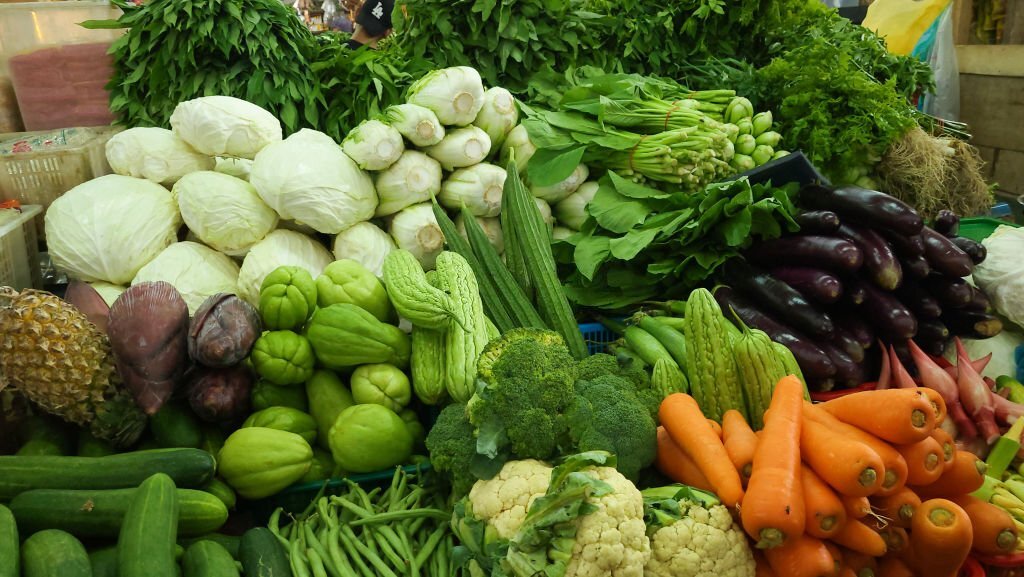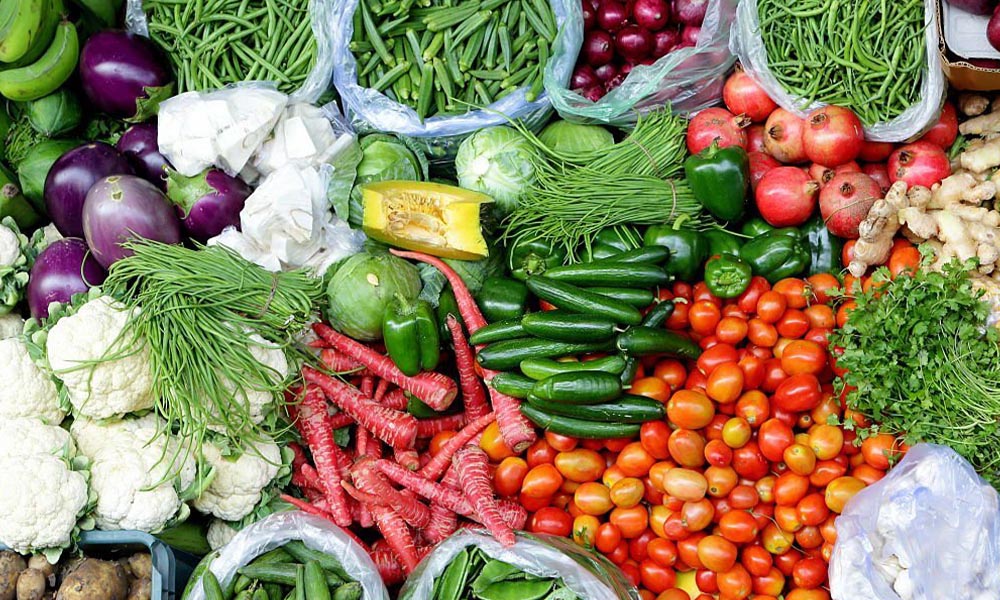Filipino cuisine is known for its rich flavors and unique ingredients, and when it comes to vegetables, the country is home to a wide array of nutrient-packed options. These indigenous vegetables not only add depth and flavor to Filipino dishes but also provide numerous health benefits. Incorporating these vegetables into your diet can boost your immune system, improve digestion, and support overall well-being.
One of the most popular Filipino vegetables is kangkong, also known as water spinach. This leafy green vegetable is rich in vitamins A, C, and K, as well as essential minerals like iron and calcium. Kangkong is also a great source of dietary fiber, which aids in digestion and helps regulate blood sugar levels. Whether sautéed with garlic and onions or added to soups and stews, kangkong is a versatile and nutritious addition to any meal.
Another Filipino vegetable with impressive health benefits is the humble ampalaya, or bitter gourd. Despite its bitter taste, ampalaya is highly sought after for its medicinal properties. It is a rich source of vitamins C and E, as well as iron, magnesium, and potassium. Ampalaya is known for its ability to regulate blood sugar levels, making it particularly beneficial for individuals with diabetes. It is commonly prepared by sautéing with garlic and tomatoes or adding it to soups and stir-fries.
Common Filipino vegetables and their health benefits

Apart from kangkong and ampalaya, there are several other Filipino vegetables that offer a wide range of health benefits. One such vegetable is malunggay, also known as moringa. Malunggay is a powerhouse of nutrients, containing high levels of vitamins C and A, iron, calcium, and antioxidants. It is known for its ability to boost the immune system, promote healthy digestion, and improve skin health. Malunggay leaves can be added to soups, stews, or even blended into smoothies for an extra nutritional punch.
Sitaw, or yardlong beans, is another popular Filipino vegetable that is rich in fiber, folate, and vitamins A and C. These long, slender beans are not only delicious but also help promote healthy digestion and support cardiovascular health. Sitaw is often used in traditional Filipino dishes such as adobo or sinigang, where its crisp texture and mild flavor complement the other ingredients.
Traditional Filipino recipes using vegetables
Filipino cuisine is known for its flavorful and hearty dishes, many of which feature vegetables as a key ingredient. Here are a few traditional Filipino recipes that showcase the versatility and health benefits of these indigenous vegetables.
- Pinakbet: Pinakbet is a classic Filipino vegetable dish that combines a variety of vegetables such as eggplant, bitter gourd, okra, and string beans. These vegetables are sautéed with garlic, onions, and tomatoes, and flavored with shrimp paste or fish sauce. Pinakbet is not only delicious but also a nutritious way to enjoy a variety of Filipino vegetables in one dish.
- Ginisang Sitaw at Kalabasa: This simple sautéed dish features sitaw (yardlong beans) and kalabasa (squash) cooked together with garlic, onions, and tomatoes. The combination of these two vegetables creates a flavorful and healthy side dish that pairs well with grilled meats or steamed rice.
- Sinigang na Kangkong: Sinigang is a popular Filipino sour soup that can be made with various meats or seafood. Adding kangkong leaves to the sinigang broth not only adds a vibrant green color but also provides an extra dose of vitamins and minerals. The combination of the sour broth and the fresh kangkong leaves creates a delicious and comforting soup.
Tips for incorporating more Filipino vegetables into your diet

Incorporating more Filipino vegetables into your diet is a great way to boost your overall health and wellness. Here are some tips to help you incorporate these nutrient-rich vegetables into your everyday meals:
- Start small: If you’re new to Filipino vegetables, start by incorporating one or two varieties into your meals. Experiment with different cooking methods and flavors to find the combinations that you enjoy the most.
- Mix and match: Don’t be afraid to mix different Filipino vegetables together in one dish. Combining various flavors and textures can create a more interesting and nutritious meal.
- Get creative: Filipino vegetables can be used in a variety of dishes, from soups and stews to stir-fries and salads. Get creative with your recipes and try new ways to incorporate these vegetables into your meals.
- Shop local: Look for Filipino vegetables at your local farmers’ markets or specialty grocery stores. Supporting local farmers not only ensures the freshness and quality of the produce but also helps sustain local agriculture.
- Grow your own: If you have space, consider starting a small vegetable garden to grow your own Filipino vegetables. This not only allows you to enjoy fresh and organic produce but also connects you to the process of food cultivation.
The importance of supporting local farmers and sustainable agriculture
Supporting local farmers and sustainable agriculture is not only beneficial for the environment but also for our own health and well-being. By purchasing Filipino vegetables from local farmers, we contribute to the local economy and help ensure the availability of fresh and nutritious produce in our communities. Additionally, supporting sustainable agriculture practices helps protect the environment, conserve natural resources, and promote biodiversity.
Where to find Filipino vegetables in your area
Finding Filipino vegetables in your area may require a bit of research and exploration. Start by visiting your local farmers’ markets, as they often have a wide variety of locally grown produce, including Filipino vegetables. Specialty grocery stores or Asian markets may also carry a selection of Filipino vegetables. If you’re unable to find them locally, consider exploring online options that deliver fresh produce straight to your doorstep.
Filipino vegetable gardening tips for beginners
If you’re interested in growing your own Filipino vegetables, here are some tips to get you started:
- Choose the right location: Most Filipino vegetables thrive in full sun, so choose a location in your garden that receives at least six to eight hours of direct sunlight each day.
- Prepare the soil: Filipino vegetables prefer well-drained soil that is rich in organic matter. Amend your soil with compost or well-rotted manure to ensure optimal growth.
- Start with seeds or seedlings: Some Filipino vegetables can be grown from seeds, while others may require seedlings. Follow the recommended planting instructions for each vegetable to ensure successful growth.
- Water regularly: Filipino vegetables generally require regular watering to thrive. Keep the soil evenly moist but not waterlogged.
- Protect from pests: Use organic pest control methods such as companion planting, row covers, or natural sprays to protect your vegetable plants from pests and diseases.
Filipino vegetable dishes for specific health concerns
In addition to their overall health benefits, certain Filipino vegetables are known for their specific properties that can address various health concerns. Here are a few examples:
- Ampalaya for diabetes: Ampalaya, or bitter gourd, is well-known for its ability to help regulate blood sugar levels. Including ampalaya in your diet can be beneficial for individuals with diabetes or those looking to manage their blood sugar levels.
- Malunggay for lactation: Malunggay leaves are commonly used in traditional Filipino cuisine and are believed to help increase milk supply in breastfeeding mothers. Including malunggay in your diet can be beneficial for lactating women.
- Kangkong for digestion: Kangkong, or water spinach, is rich in dietary fiber, which aids in digestion and helps regulate bowel movements. Consuming kangkong regularly can help improve digestion and prevent constipation.
Frequently Asked Questions
What are the nutritional benefits of Filipino vegetables, and why are they important for a healthy diet?
Filipino vegetables offer a wide range of essential vitamins, minerals, and antioxidants that are crucial for overall health. They provide vital nutrients like vitamins A and C, fiber, and various minerals, contributing to improved immunity, digestion, and overall well-being.
Can you provide examples of commonly consumed Filipino vegetables and their specific nutritional contributions?
Common Filipino vegetables like kangkong (water spinach), talong (eggplant), and ampalaya (bitter melon) are rich in vitamins and minerals. Kangkong, for instance, is a good source of iron and calcium, while ampalaya is known for its potential to lower blood sugar levels due to its bitter taste.
How can Filipino vegetables be incorporated into various dishes and diets for maximum health benefits?
Filipino vegetables can be used in a wide array of dishes, from stir-fries and soups to stews and salads. Incorporating them into your diet adds flavor, texture, and nutrition to your meals. Explore traditional Filipino recipes or experiment with your own creations.
Are there any unique cooking techniques or recipes that highlight the flavors and nutrients of Filipino vegetables?
Filipino cuisine offers unique recipes like “Pinakbet” (a vegetable stew) and “Laing” (taro leaves in coconut milk) that showcase the flavors and nutrients of these vegetables. These dishes often use seasonings like shrimp paste or coconut milk to enhance taste.
Are there specific recommendations for storing and preserving the nutritional value of Filipino vegetables at home?
To preserve the nutritional value of Filipino vegetables, store them in a cool, dry place or the refrigerator. Use airtight containers or plastic bags to keep them fresh. It’s best to consume them as soon as possible after purchase for maximum nutrition
Conclusion
Incorporating Filipino vegetables into your diet is not only a delicious way to enjoy the vibrant flavors of Filipino cuisine but also a smart choice for your health. From the nutrient-rich kangkong to the versatile ampalaya, these indigenous vegetables offer a wide range of health benefits. Whether you choose to prepare traditional Filipino recipes or experiment with new flavors and combinations, embracing these local vegetables can go a long way in boosting your immune system, improving digestion, and supporting overall well-being. So why not explore the world of Filipino vegetables and add a healthy dose of flavor to your meals? Your body will thank you for it.


